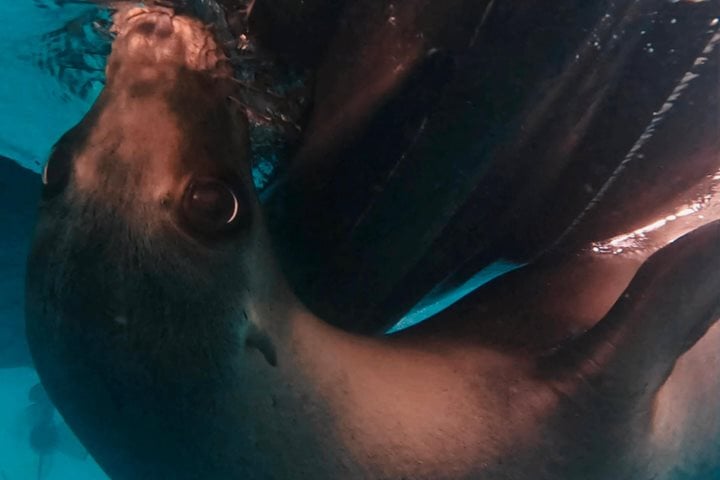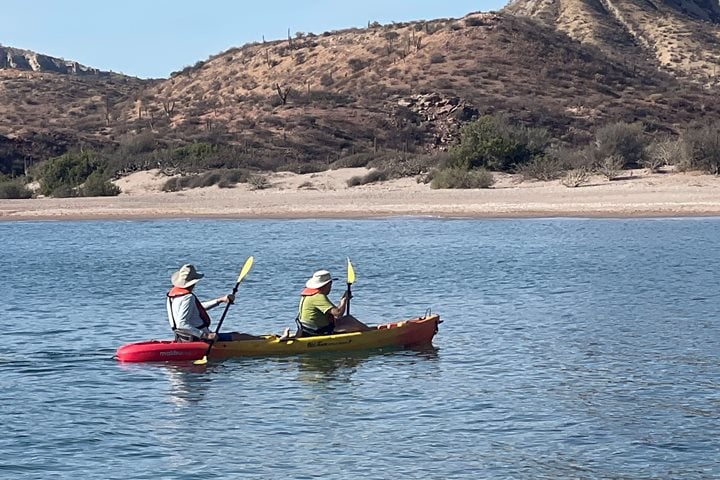We started our first day in the Gulf’s midriff region earlier than usual; long before sunrise a group of adventurous photographers went ashore at San Esteban Island. We walked carefully along the shoreline trying not to disturb the yellow-footed gulls than nest here while making our way to a flat area just above the beach where several cardón cacti grow. Once there, each photographer chose their favorite cactus and had a great time trying many different compositions with silhouettes and beautiful colors of sunrise.
After breakfast we came back to the island to explore the long arroyo and look for several of the endemic species of animals and plants that live there, particularly the two largest and charismatic, the pinto chuckwalla and the San Esteban Island long-tailed iguana. Both species were found and well photographed by our avid photographers. Assistant expedition leader Shawn Lucas and I explored a different side of the island using scuba gear; we documented on video the incredibly rich marine life that live in these cold waters including four different species of stingrays and many different varieties of sponges, gorgonians and sea fans, plus octopus, and the ubiquitous California sheep head.
After leaving San Esteban Island in the late part of the morning, National Geographic Sea Bird headed northwest towards Rasa Island. But before long, we encountered a group of exuberant bottlenose dolphins that entertained us for a while with their synchronized swimming and occasional bow riding. We eventually made it to Rasa Is. where we dropped the anchor to explore it by expedition landing craft. Rasa is the main nesting place for two species of seabirds, the Heermann’s gull and the elegant tern, as an estimated 95% of the world’s reproductive population of both species congregate there. However, due to the very strong ENSO (El Niño Southern Oscillation) that is taking place this year, warming the waters of the Eastern Pacific and creating adverse conditions for the small pelagic fishes that the birds eat, nesting is not happening. We watched numerous birds around the island, but not nesting. Other residents were busy with their own offspring, though, like the peregrine falcons and the ospreys. California sea lions were getting ready for their breeding season next month, and most of the pregnant adult females were spent time resting at the surface or on the rocks at nearby Racito islet. The whole region is full of life and we all enjoyed another beautiful day in the Sea of Cortez.









